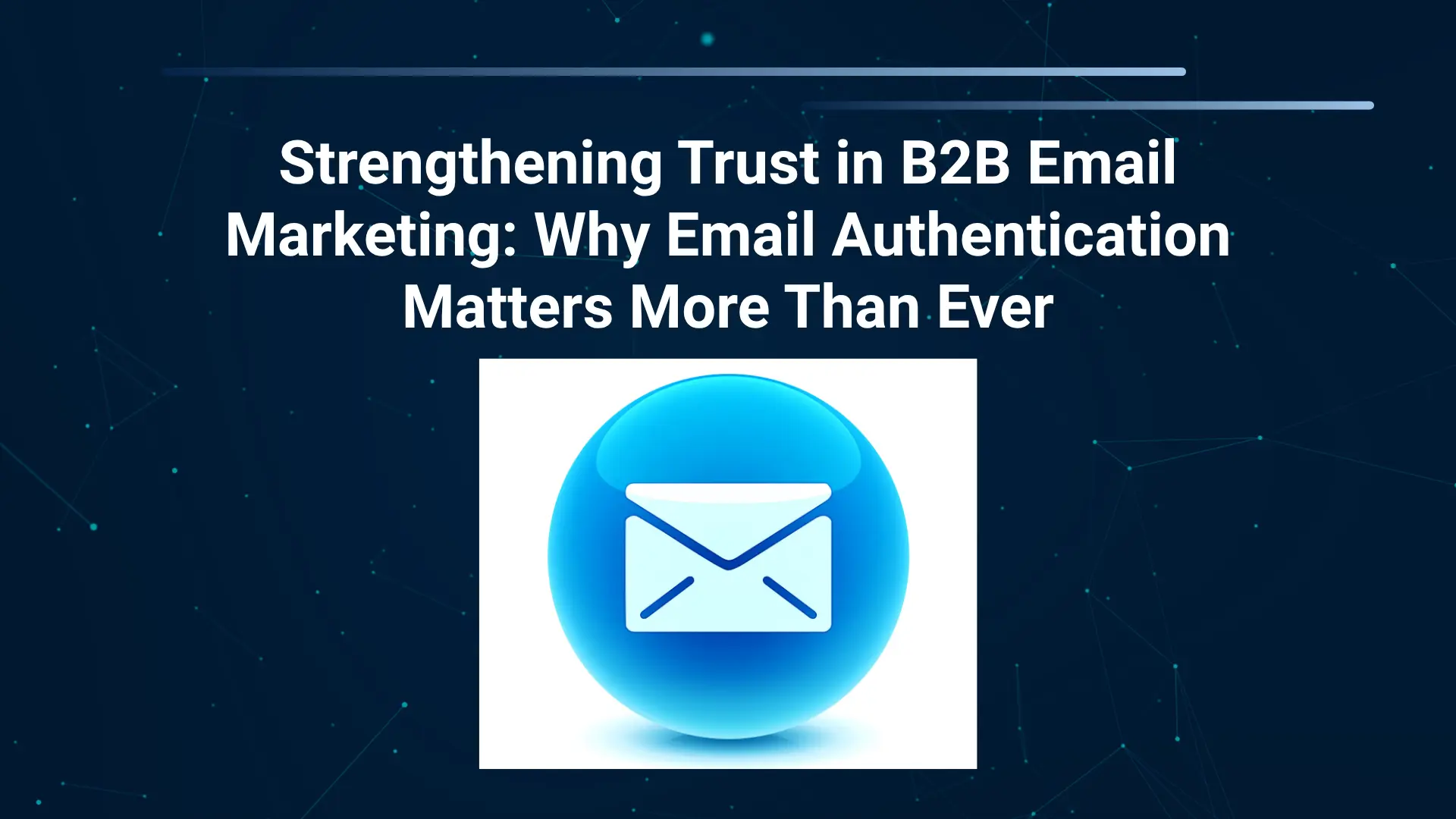Table of Contents
In today’s B2B landscape, email remains the most powerful marketing channel—but it’s also the most targeted by cyber threats. With phishing, spoofing, and domain impersonation on the rise, businesses must take strong steps to protect both their brand and their recipients. That’s where email authentication becomes a game-changer.
What Is Email Authentication?
Email authentication is the process of verifying that an email is genuinely sent from the domain it claims to be. It uses protocols like SPF (Sender Policy Framework), DKIM (DomainKeys Identified Mail), and DMARC (Domain-based Message Authentication, Reporting & Conformance) to validate senders and prevent malicious attacks.
Why Email Authentication Is Critical for B2B Marketers
In B2B marketing, trust and reputation mean everything. If your domain is used for spam or phishing, it can ruin your credibility overnight. Email authentication not only protects your brand image but also ensures that your marketing emails reach the right inboxes—instead of spam folders.
Key Benefits of Email Authentication
✅ Improved Deliverability: Authenticated emails are more likely to bypass spam filters and land in the inbox.
✅ Brand Protection: Prevents scammers from misusing your domain for fake or harmful campaigns.
✅ Enhanced Security: Protects clients, partners, and prospects from phishing attempts.
✅ Better Engagement: When recipients trust your emails, open and click rates increase.
How Email Authentication Works
Email authentication protocols work by checking the sender’s domain and digital signature before allowing the message into the recipient’s inbox. For example:
- SPF verifies that the sending server is authorized to send emails on behalf of your domain.
- DKIM ensures that the email content hasn’t been altered during transit.
- DMARC ties both SPF and DKIM together to instruct mail servers on how to handle unauthorized emails.
Email Authentication vs. Email Verification
While authentication confirms the legitimacy of the sender’s domain, verification ensures the recipient’s email address is valid and active. In short:
- Authentication = Trust in sender
- Verification = Trust in recipient list
Both work together to maintain healthy email performance and protect your marketing ROI.
Best Practices for B2B Email Security in 2025
- Adopt SPF, DKIM, and DMARC protocols across all sending domains.
- Use BIMI (Brand Indicators for Message Identification) to display your brand logo in emails for added trust.
- Regularly verify and clean your B2B contact database to remove inactive or risky addresses.
- Monitor DMARC reports to identify unauthorized senders or suspicious activity.
- Educate your marketing team about phishing risks and data compliance.
Conclusion
In 2025, email authentication isn’t just a technical setup—it’s a business necessity. For B2B marketers, it’s the key to building trust, improving deliverability, and protecting the brand’s digital identity.
At IT Tech Buzz, we believe that smart, secure communication is the foundation of every successful B2B relationship. It’s time to make email authentication the cornerstone of your next campaign.
